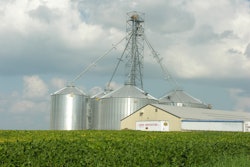In today’s market, companies often lose sight of their core. Most feed or grain companies have ambitions to grow their business but few have an actual plan, beyond working harder. With the agricultural sector’s increased understanding of how to optimize animal and plant performance, there is continuous pressure to keep up with genetic improvements. This manifests itself through choices made by owners and presidents whether to enter specialist or niche markets, open up new geographies and supply chains, or adopt new technologies such as analytical or processing equipment. Given these options and the road forward, the question then is, "why do some feed & grain companies prosper while others do not?"
We believe that one reason some businesses fail and others succeed lies in “the paradox of growth.” Over the past ten years, Chris Zook, a consultant with Bain & Co, has developed a set of ideas known collectively asProfit From the Corethat offers a practical and useful alternative. These ideas are simple and logical, and, in our experience, are intuitively attractive and practically useful to firms of every size. According to Zook, there are four pillars to a sustained growth strategy:
Pillar 1: A business must have a strong, well-defined core with leadership economics in the “core of the core”
Every business has a core. Most likely it is the part of the business, which, more than any other, drives customer loyalty and firm profitability. The core is what makes your company unique and is the root of your competitive advantage in the market place. Do you know (specifically, not generally) what the core of your business is? For many feed manufacturers, they may simply say producing feed. Grain merchants may say that they are traders. However, is that really the entire core of your business model? Do you have a reputation for producing value added feed products or are you known for your uniformity and quality control procedures? Perhaps it is your quick delivery or ability to custom mix and design new feed formulations. How many discussions have you had at board level about what the core of your business is? Is your management team clear on what the core of your business is? Understanding the core is important; it is the starting point for identifying growth opportunities.
在许多企业,管理团队不同意on the core and some have never even talked about it. By not fully identifying the core or by taking it for granted, companies can prematurely abandon the real core of the business or become involved in growth initiatives that are too far from the core, spread resources too widely and develop confusion in their organizations. An example of this was an organization in Northern Europe that started 80 years ago as a fishmeal supplier, then moved into feed, and later animal breeding, biologics and genetics. A venture in the Middle East involving the construction of turn-key plants led to the collapse of this poorly conceived business with the company being sold and restructured. Today, it is successful with a clear mission that its core is in the poultry health industry.
Feed and grain companies should identify their core business and then leverage their strength and success in that core to identify growth opportunities. Many mills and traders have multiple product lines within their core business area, such as feed for cattle, pig or poultry. It is worth examining each of these areas in detail and asking which contributes most to growth in sales and profits and to then examine why. This can be an effective way to begin to understand the core of your business.
Pillar 2: Pursue the correct adjacent moves (and avoid the wrong ones) to secure growth within the company
Businesses have many options for growth each year, but most growth initiatives fail to generate significant sales or profits. Those most likely to succeed are ones that are close, or adjacent in Zook’s words, to the core of the business. A company can achieve new adjacency growth through products or services, new customer segments, new parts of the value chain, distribution channels, business and geographies. For example, Nestlé has grown from its core business of infant formula and instant coffee to enter adjacent businesses such as pet food (adjacent in that they have similar customers, logistics, production, marketing and distribution), which has proved to be very successful.
The best adjacency strategies also leverage and reinforce the core business. For example, the ability of Nestlé to negotiate with retailers is enhanced by having another product sector, pet food, in which it owns and sells strong, high quality brands. For grain traders, it may be valuable to invest in a new commodity or a more agile supply chain. For feed companies, a successful adjacent growth strategy may be adding a line of products that include heterotrophic algae. Besides seeing an increase in immunity, a decrease in mortality and increased litter size in herds, producers who utilize feeds with this type of algae will also be able to further brand their products as value-added DHA Omega-3 enriched for consumers. Another opportunity may be incorporating a line of products marketed toward odor or dust control. As our population becomes less rural and more urbanized, the industry will need to find ways to be more neighborly and accommodate environmental regulations.
A useful way to engage in this process of adjacent thinking is to take the definition of the core you have identified for your business and then ask who else might buy these products or what else would we need to do in order to get a new customer group to buy our products.
Pillar 3: Become the best at following the customer
Consumers often forget that the food and feed industries are intertwined, and that together they are part of a larger picture, the human health industry. As professor Patrick Wall, University College Dublin, Ireland said at Alltech’s 29th International Symposium, "Your jobs are so important. If something goes wrong in the food chain, the repercussions are huge. Everything an animal eats — so do we. It takes millions of dollars and years to build a brand, but can take a few seconds to destroy it.”
With headlines dominating our newspapers each day on horse meat contamination in Europe, E-coli spinach scares in the United States and dog treats from Denver linked to salmonella, it is more important than ever to have a traceability program in place from farm to fork for both humans and livestock. A study by AMR Research, a U.S.-based international research firm, shows recalls are more common and costly than expected — expenses often exceed $10 million per recall, with companies losing twice that much. An effective traceability system could make many of these recalls avoidable. Perhaps feed companies can look at ways to improve quality control practices in the mill and ensure consistency and uniformity in every bag of livestock, poultry and pet feed. Take some time to identify parts of your state, country or region that do not currently feed your product in their operations. Why don't they? What would you have to do to change that? The answers should be a fairly long list, and this can be your portfolio of growth opportunities.
A clear example of following the customer has been the substantial investments in China by key suppliers of McDonalds and Yum Brands (KFC), which has been driven by those restaurant chains’ demands to only receive ingredients with a similar consistency, supply chain and quality as they receive in their parent countries. As food safety becomes a real consumer concern, companies building in China are likely to bring an entire supply chain of suppliers and buyers with them.
Pillar 4: Use repeatable formulas in the business strategy
The final stage in this process is to avoid reinventing your wheel. In finding and investing in adjacent growth opportunities, your firm needs to find a way to repeat its formula for success in each new market. Nestlé, for example, has built a repeatable formula based on strong brands, premium prices and wide distribution. By implementing a repeatable formula in their business plans, companies will find internally they will have more strategic clarity, speed in recognition, decision and action, lower management complexity and more focused innovation.
For your own business ask yourself - how successful have you really been to date in your feed or grain businesses? How do you serve your customers? How do you deliver your product? What are your skills in sourcing materials and inputs or service? This is the starting point for identifying your repeatable formula.
Defining the core of a company is the foundation to today’s business strategy. “The core” is what makes a company unique and is the key source of competitive advantage. While both grain and feed companies will need to continue to find techniques to reduce costs and increase the value they deliver for their producers, growers and customers, the industry must also weigh the cost of the innovation against improvements in genetics and in meeting regulatory guidelines and health concerns. As we listen to the voices of our consumers, it is even more critical to shift from the mindset of “just being in the feed/grain business” to recognizing we have a role in the human health industry that must feed an additional billion people by 2020.






















